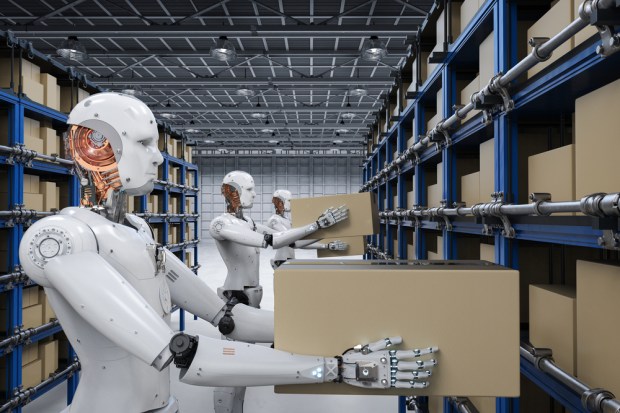Supply Chains, Aided by AI And Robots

Two-day deliveries. One-day deliveries. Consumers want what they want now. That means supply chains have to be more efficient, and so do warehouse and logistic services providers. GreyOrange CEO Chris Barber tells PYMNTS that advanced technologies — including artificial intelligence (AI) and robots — can help providers scale intelligently, and enable enterprises to get goods to consumers with speed.
eCommerce is ever faster — and consumers want what they want — now. That means for the firms shipping all manner of goods across all manner of verticals need to track inventory and supply chains in real time.
Technology is the key to speed. To that end, software and robotics firm GreyOrange said earlier this month that the company had forged partnerships with eight warehouse firms in the United States.
Through efforts that leverage machine learning and artificial intelligence (AI), GreyOrange will help those companies — including Avik Services, Bricz, Hy-Tek, Info-Sun, McCombs-Wall, S&H Systems, TREW and UST Global — optimize their operations as they serve corporate customers.
In an interview with PYMNTS, Chris Barber, GreyOrange’s CEO America, said that regardless of the industry they may serve, warehouse logistics and supply chain firms have the same challenges in place, spanning labor shortages, the ability to meet peak demand. There is also, he said, “a general lack of ability” to scale the business as changes warrant.
“We see warehouse logistics and supply chain firms with supply chains that were engineered to support customers that are no longer buying the way they used to … all while trying to compete in a market that is moving closer and closer to same-day delivery,” he told PYMNTS.
In the strive to transform supply chains for end clients, said Barber, the companies mentioned above are examining software, hardware, processes, locations and data to find the mix that best serves the needs of order fulfillment and scalability.
AI and smart robotic hardware, he said, can offer benefits where traditional technologies may fall short, especially where retailers are challenged as they strive to meet eCommerce orders while ensuring that stores are stocked with optimal levels of inventory at the right time. The end customers of warehouse and logistic firms, he said, need to move quickly in a world where consumers expect deliveries in two days or fewer – and Amazon, of course, has been moving to next day delivery.
“The evolution in supply chain engineering that we are seeing today began with AI, machine learning and smart robotic hardware,” he said, “[that] can change and flex as quickly as the businesses they support.” The verticals GreyOrange sees as having the most significant and earliest impact with these advanced technologies, he said, include retail/online fashion, third-party logistics (3PL), fast-moving consumer goods, home furnishing and electronics.
Drilling down into those technologies, he said, AI increases business adaptability, improves speed and accuracy, reduces labor risks and ultimately reduces operating costs. Moreover, it is AI that powers robots and other types of automation to be able to adapt to a new layout or process to maintain productivity even as consumer trends shift.
Robots have matured to a point where they are safely being deployed and working among human workers.
“Compared to just a couple of years ago, there are more suppliers and more users. The industry is making the transition from fixed automation to robotics,” Barber told PYMNTS. “We are at a juncture very similar to the mid-1980s when computers were first taking their place in manufacturing and distribution. It’s no longer a matter of if robotics and AI will take their place in manufacturing and distribution operations — now it’s a matter of how long before it is the new standard.”
